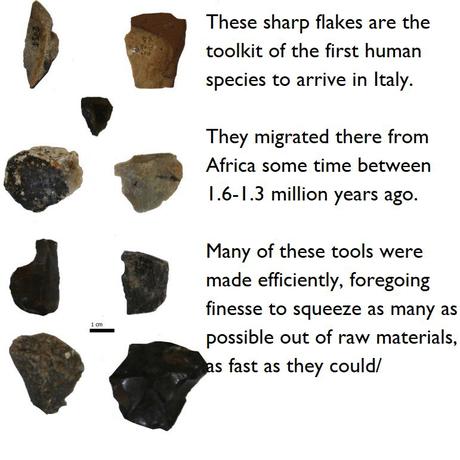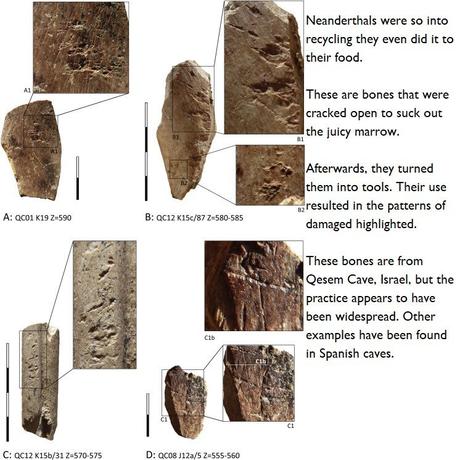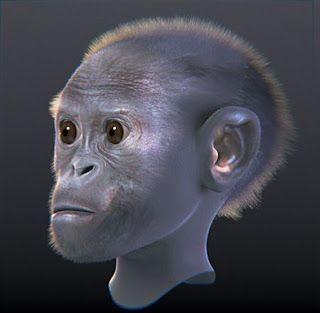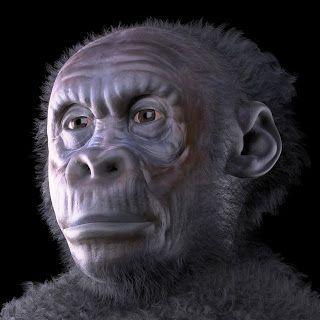Here are the top human evolution news stories of the past week, as voted on by my social media followers. To see the full set of news - or have your say on what's featured here - be sure to check Filthy Monkey Men out on twitter.
#1 - The first Italians
Before modern humans even existed, some of our ancient relatives were already in the process of conquering the world. This period of our history is surprisingly enigmatic, particularly in Europe. We know these early species - like Homo erectus - arrived in the region sometime between 1.7-1 million years ago, but not too much more than that.
Enter the site of Pirro Nord in Italy. Early stone tools were found there, sometime between 1.6-1.3 million years old, making it likely these are some of the first Italians (even if they aren't the same species as modern Italians). This site sheds light on the chronology and technology of these early people.

#2 - Recycling food
Despite the name "stone age", bone was actually an important material for many human species. This includes the Neanderthals, who used it to make some of their toolkit.
It turns out that Neanderthals took extra steps to get all the bone needed for their tools. This includes recycling their food! First they'd crack bones to suck out the tasty marrow, then turn the leftovers into tools

#3 - The first Australopithecus reconstructed
Taung child was the first Australopithecus fossil ever discovered. Finding it in a South African quarry helped convince researchers that humans actually evolved in Africa, rather than Asia as was widely thought at the time.
Now, this three year old baby ape has been forensically reconstructed. There's two versions here. The first is based on a reconstruction from just using the fossil. The second is done by taking a chimp and modifying it until it's like the fossil, giving a hint of how they may have looked later in life.


#4 - Homo naledi's broken teeth
Homo naledi is the newest, weirdest addition to the human family. It seems fitting then that even their pattern of tooth wear is unusual.
What's up with that?It turns out that 44% of their teeth have been chipped. That's 8x more than the rate of damage seen in chimps. This suggests they had a strangely gritty diet.
#5 - Australopithecus eats, shoots and leaves
From around 4 million years ago our ancestors began spending more and more time out of the trees and on the ground. What did they eat when they were down there?
Much speculation has followed over the years. Maybe they scavenged meat from dead animals, or perhaps they were reliant on roots and tubers.

However, new research suggests we've been overlooking a key food source all this time: leaves. It turns out that they're one of the easiest to consume, yet most protein rich, food sources on the Savannah.
References
- Arzarello, M., Peretto, C. and Moncel, M.H., 2015. The Pirro Nord site (Apricena, Fg, Southern Italy) in the context of the first European peopling: Convergences and divergences. Quaternary International, 389, pp.255-263.
- Rosell, J., Blasco, R., Peris, J.F., Carbonell, E., Barkai, R. and Gopher, A., 2015. Recycling bones in the middle pleistocene: some reflections from Gran Dolina TD10-1 (Spain), bolomor cave (Spain) and Qesem cave (Israel). Quaternary International, 361, pp.297-312.
- Taung child reconstructed
- Towle, I., Irish, J.D. and De Groote, I., 2017. Behavioral inferences from the high levels of dental chipping in Homo naledi. American Journal of Physical Anthropology.
- Paine, O.C., Koppa, A., Henry, A.G., Leichliter, J.N., Codron, D., Codron, J., Lambert, J.E. and Sponheimer, M., 2018. Grass leaves as potential hominin dietary resources. Journal of human evolution, 117, pp.44-52.

